The execution of politics: how one photo of a Viet Cong prisoner shaped the war
*Trigger warning: Violent image*

I came across this particular image during my own personal exploration into global politics following World War II, in an online article about American politicians. I was shocked after reading into the caption, to find that in this image the man is already dead, with the bullet either still passing through his head, or having just passed through it.
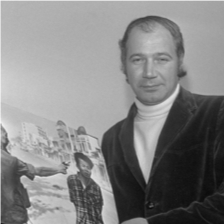 I find this attitude towards this extremely violent situation quite striking. Even with an understanding that extensive exposure can lead to stoicism, it is intriguing to me that one can
I find this attitude towards this extremely violent situation quite striking. Even with an understanding that extensive exposure can lead to stoicism, it is intriguing to me that one canBy capturing and conveying suffering through visual imagery, the photographer becomes a witness of death, but also a moral actor. Adams believed two people were killed in that instant, “the general killed the Viet Cong; I killed the general with my camera”6.
Mobilising Support for Social Action
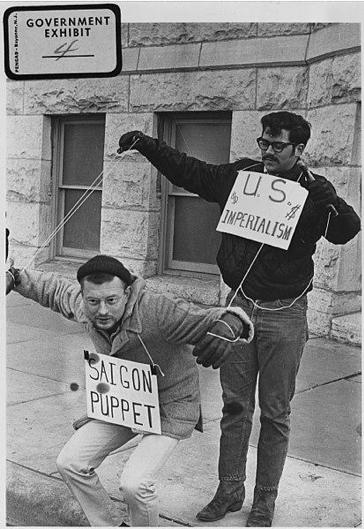 Kleinman and Kleinman5 emphasise that visual representations of evil can be used to promote social action. Indeed this image slowly became an icon for American activism, and to this day serves as a reminder of the atrocities that arise from political conflicts. This photo was a “classic instance of the use of moral sentiment to mobilize support for social action”. A fellow Vietnam War photographer, David Hume Kennerly, put it this way: “I don’t know that it ended the Vietnam War, but it sure as hell didn’t help the cause for the government – one thing I know for sure, anybody who’s ever seen that photo has never forgotten it”.6
Kleinman and Kleinman5 emphasise that visual representations of evil can be used to promote social action. Indeed this image slowly became an icon for American activism, and to this day serves as a reminder of the atrocities that arise from political conflicts. This photo was a “classic instance of the use of moral sentiment to mobilize support for social action”. A fellow Vietnam War photographer, David Hume Kennerly, put it this way: “I don’t know that it ended the Vietnam War, but it sure as hell didn’t help the cause for the government – one thing I know for sure, anybody who’s ever seen that photo has never forgotten it”.6
The image was used to give a glimpse into the reality for those enduring such brutality, and conveyed a powerful intimacy and desperate message to the people of the USA. It is still considered in the USA to be the “Photo That Changed the Course of the Vietnam War”1.
Appropriating Suffering
This image meant that the death of the Viet Cong prisoner would not go unremembered. As Astor says, “this last instant of his life would be immortalized on the front pages of newspapers nationwide”1. However Kleinman & Kleinman5 also discuss how the suffering depicted in an image can be taken advantage of, particularly in the way that it is distributed and consumed. As is stated in their article, the use of an image to ‘right an inhumane situation’ can be inhumane in itself.
The image of suffering above was used by the American anti-war effort to serve a purpose; as a tool in the process of stopping the Vietnam War, but at what cost? The image may have succeeded in saving many lives by cutting the war shorter, however, the insensitive use of the image was disastrous for some.
For the victim’s wife, Nguyen Thi Lop3, the image served a very different purpose than it’s anti-war role in the US. For her, the use of the image played the role of messenger: informing Nguyen of her husband’s death. In a clip years on, Nguyen is recorded saying in Vietnamese that “a friend of mine brought me the newspaper and then I found out what had happened to my husband”.
The reproduction of this image did not allow this widow the privacy or respect that she deserved. It shows lack of understanding, respect and permission required in the distribution of material. Furthermore we can argue that to share the intimate destruction of human life with such a level of triviality (as glancing past it in a newspaper) de-sensitizes, and reduces from the pain of the victim. Kleinman and Kleinman explain:
“Suffering ‘though at a distance,’ is routinely appropriated in American popular culture, which is a leading edge of global popular culture. The globalization of suffering is one of the more troubling signs of the cultural transformations of the current era: troubling because experience is being used as a commodity, and through this cultural representation of suffering, the experience is being remade, thinned out, and distorted”.5
One effect of this, they argue, is the erasure and distortion of the importance of social experiences of suffering. In this case, the image itself can not inherently convey the contextual political systems that produced it; its literal content is simply a violent act between two individuals. Yet re-contextualised as part of the anti-War effort, it did serve to highlight wider political contexts, such that the social response to the image led to not only condemnation of the violent act by that one soldier, but a change in public attitudes towards US involvement in Vietnam, and eventually a shift in political decisions by the US.
Conclusion
Visual depictions of suffering can be used to make us aware of the suffering experienced in other parts of the world. These visual depictions have the potential to be used as a tool to support social movements. However, the use of images does have its limitations and concerns, transforming the intimate suffering of real people into a tool. It is still up to debate whether this is an acceptable price for social change, and who gets to drive the production and circulation of such images, what they mean, and for what purpose.
References
- Astor, M. (2018, February 1). A Photo That Changed the Course of the Vietnam War. The New York Times. Retrieved from https://www.nytimes.com/2018/02/01/world/asia/vietnam-execution-photo.html
- Watson, A. M. (2015). PULITZER PRIZE PHOTOGRAPHY: SAIGON EXECUTION. Retrieved from http://www.newseum.org/2015/05/12/pulitzer-prize-photography-saigon-execution/
- VIETNAM: VIETNAM WAR ANNIVERSARY: MEDIA (2). (2000).. Retrieved from http://www.aparchive.com/metadata/youtube/3061fe038ddb4dece288d433331d7b91
- Adler, M. (2009). The Vietnam War, Through Eddie Adams’ Lens.All Things Considered. Retrieved from https://www.npr.org/2009/03/24/102112403/the-vietnam-war-through-eddie-adams-lens
- Kleinman, A. (1996) ‘The Appeal of experience; the dismay of images: cultural appropriations of suffering in our times’, Daedalus. American Academy of Arts & Sciences, 125(1), pp. 1–23. Available at: https://ezproxy.otago.ac.nz/login?url=http://www.jstor.org/stable/20027351. ISSN: 00115266
- Ruane, M. E. (2018, February 1). A grisly photo of a Saigon execution 50 years ago shocked the world and helped end the war. Washington Post. Washington Post. Retrieved from https://www.washingtonpost.com/news/retropolis/wp/2018/02/01/a-grisly-photo-of-a-saigon-execution-50-years-ago-shocked-the-world-and-helped-end-the-war/?noredirect=on&utm_term=.5374c97d4477
- Prescott, T. L. Appropriation and Representation. Image Journal, (97). Retrieved from https://imagejournal.org/article/appropriation-and-representation/
- Mitchell, R. (2018, March 31). A ‘Pearl Harbor in politics’: LBJ’s stunning decision not to seek reelection. Retrieved April 26, 2019, from https://www.washingtonpost.com/news/retropolis/wp/2018/03/31/a-pearl-harbor-in-politics-lbjs-stunning-decision-not-to-seek-reelection/?utm_term=.cdd2e6ec89aa
The Smell of Suffering: Portrait of a Street Boy
Written by Yi Li, for an assignment on ‘communicating, consuming, and commodifying evil and suffering’, in ANTH424
Street photographers visualise social suffering through their artwork. They engage (themselves and us) with unfamiliar experiences: shrinking cities, strange portraits. Photographers can function as both moralists and anthropologists. They are often spectators, often self-exiles – presenting a version of evil for others to interpret, but often also fulfilling their own sense of moral obligation.
My argument is that both the positionality of the street photographer, and the medium of the photograph, means that photos sometimes break free from the time and space, conveying a universalism of personal adversity. I use an example of street photography of homeless in Moscow to discuss this.
Down and Out
German photographer Miron Zownir is one of the most radical contemporary examples. His focus on marginal characters and the dark side of cities is rooted in his childhood. A Ukrainian-German who grew up in post-war Germany, Zownir as a teenager immersed himself in Eastern European literature without trusting any existing political systems or social stereotypes. His inherent interest in individualists inspired him to live in slum-like places, capturing streets with an anti-establishment attitude.
The street portrait is from Miron Zownir’s publication Down and Out in Moscow, a series of images that captured the homeless crisis in the Russian capital in 1995, after the collapse of the Soviet Union in 1991.
I noticed the smoking boy with an adult expression to his cynical appearance when I first came across it in 2018. It is somehow different from the other challenging photos in his book. Momentarily, the encounter between Miron Zownir and the boy constructed a story about how individuals were abandoned by society. The diffusing cigarette smoke in front of the boy seems to allow me to smell the evil that permeated the city.
Kleinman & Kleinman (1996)[i] discuss the moral implications of photographs, through contextualising engagements within creators, audiences and images.
Zownir’s photographic experience runs through the technical transition: turning from black-and-white film to digital photography in the post-modern era. This photo was captured in a classic form, of black and white portraiture displayed in gallery spaces, and print journalism (books, and magazines). But it is worth noting that the extended agency of photographs can shift, depending on medium, from a momentary, regional realm to a worldwide standing discussion, through different forms of reprinting and representing.
How different would the viewers experience of this boy’s suffering be, scrolling past a small version in a social media feed? Touching his face on a tablet?
Moral Obligation in Street Photography: Unperceived Suffering as Social Experience
Anthropologists may ask: what is the basis of a photographer’s sense of moral obligation to take photos on streets?
Street photography concentrates on people and their behaviour in public, thereby also recording personal history: though without formal consent, and with the combination of spontaneity, outsider perspective, and private exploration. These subjects of circumstances are generally unaware – either stared at or ignored until they were documented. Street photography uses these collected narratives to define cultures or places, with no duty to serve a larger whole, and no limitation on how they reconstruct these places[ii].
Kleinman & Kleinman considered that photographers represent individual suffering as part of social experience, for others to access – whether these are extreme or ordinary forms of suffering. But as anthropologists, they caution that “there is no timeless or spaceless universal shape to suffering,” (1996, p:2).
In Down and Out in Moscow, Miron Zownir photographed death, sin, and a harsh lived reality. Underlying the powerless state, the rampantly violent proliferation pushed Moscow to become a hotbed of criminal forces in the 1990s; “the most aggressive and dangerous city, … people were dying right there on the street”.[iii] Such tension immediately changed Zownir’s original mission: to document Moscow’s nightlife with three-month project funding from a photographic committee.
Suffering is one of the existential grounds of human experience, and Kleinman & Kleinman suggest that moral witnessing also must involve a sensitivity to others, albeit with unspoken moral and political assumptions. Still functioning as a photographer, Zownir did not tend to query the government, or alter Moscow residents’ condition – but instead chose to live briefly in this shadowed twilight zone, to experience the nightmare.
Individual into the Universal: Reflexive Appreciation against the Silent Oblivion
How can we perceive a stranger’s suffering as universal? Here, a street boy’s sophisticated body language is beyond verbal expressions: dressing in a suit over a horizontal striped turtleneck sweater, his hands are hidden in his pants pockets like a social youth. He looks indifferent to the surroundings and unmoved by the photographer. He is clothed, unlike many beggars, and yet he was banished to a community where no-one had a home.
This portrait reminded me of the 1994 film In the Heat of the Sun. The film is based on Chinese writer Wang Shuo’s novel Wild Beast, which is set in Beijing during the Cultural Revolution, and tells how a teenage boy and his friends are free to roam the streets day and night in a period in which all the social and educational systems are extremely non-functional. Both protagonists are undergoing suffering – the film an example of the way their individual experiences can be abstracted and universalised, for the consumption of a wide variety of audiences. Yet this this also shows us how images and films can provide an insight into personal suffering that is usually invisible – although the harsh realities behind the lives they represent often go on unchanged.
The unwitting suffering of Zownir’s street boy is entangled with the political unrest in Moscow. But as a photograph, it also exists apart from the historical context: “a professional transformation of social life […] a constructed form that ironically naturalised experience.”[iv]
The frame itself cannot communicate this context. Yet it can communicate something else – the universality of human feeling event amidst diverse and ethically incommensurable [v] societies. Perhaps this is the power of portraiture – indeed the seminal psychological research of Ekman, and others, has asserted that emotional expression on faces is universal [vi] – meaning that moods and feelings may at times transcend cultural limitations, an idea often grappled with in the anthropology of emotion.
Conclusion: photography as a container of truth and imagination
Miron Zownir wrote in his poetry: When the earth returns with a thousand sunsets, the truth of the universal is darkness.[vii]
Photography blurs social facts, but seals emotions. Whether the boy would recognise the chaos, ignorance and madness that Zownir’s book communicates, in his free childhood in post-collapse Moscow, cannot be known. Yet seeing this photo as a cultural artefact, we can recognise that both the photographer and the audience as complicit in reproducing and politicising fragmented histories in photography. The photograph becomes a container for these forms of imagination.
Several years later after this photo was taken, when Miron Zownir was back in Moscow for his upcoming exhibition, the city’s exterior had been cleaned up. The silent responses of audiences standing in front of an enlarged version of this photograph, seemed at a vast remove from its original context. What meaning, what comfort, did it hold then? Yet the world still calls for images, as ‘the mixture of moral failures and global commerce is here to stay’ (Kleinman & Kleinman 1996: p. 7).
References:
[i] Kleinman, A. & Kleinman, J. (1996) ‘The Appeal of experience; the dismay of images: cultural appropriations of suffering in our times’, Daedalus. American Academy of Arts & Sciences, 125(1), pp. 1-23.
[ii] Levy, S. (2019) ‘Street photography as a process’ in Lens Culture Guide to Street Photography, pp. 8-12
[iii] Zownir, M. (2014) ‘I was always an individualist’, Berlin Interviews, by Katerina, http://berlininterviews.com/?p=1375.
[iv] Kleinman, A. & Kleinman, J. (1996) ‘The Appeal of experience; the dismay of images: cultural appropriations of suffering in our times’, Daedalus. American Academy of Arts & Sciences, 125(1), pp. 1-23.
[v] Fassin, D. (2009) ‘Beyond good and evil?: Questioning the anthropological discomfort with morals.’, Anthropological Theory. Sage, 8(4), pp. 333–344.
[vi] Ekman P, Friesen W (1976). Pictures of Facial Affect. Consulting Psychologists Press : Palo Alto.
[vii] Zownir, M. (2018) ‘Black’, Vision

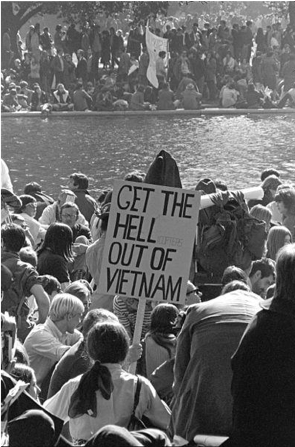
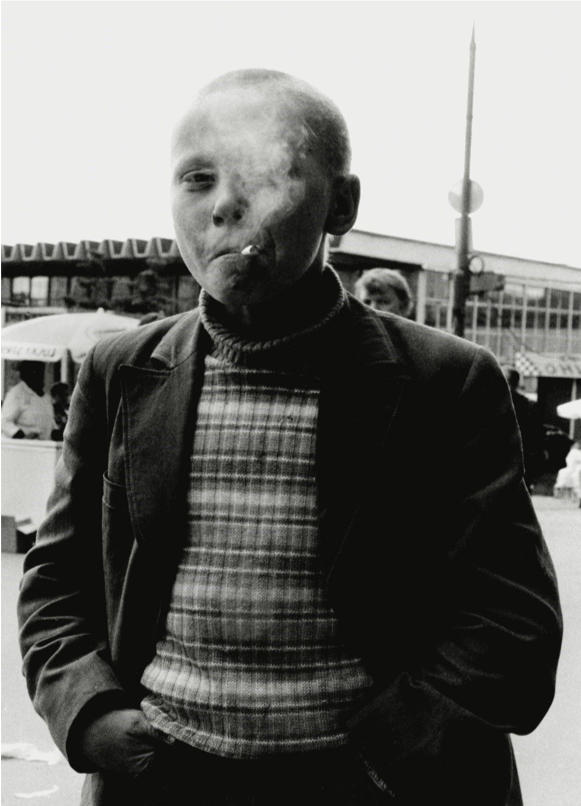
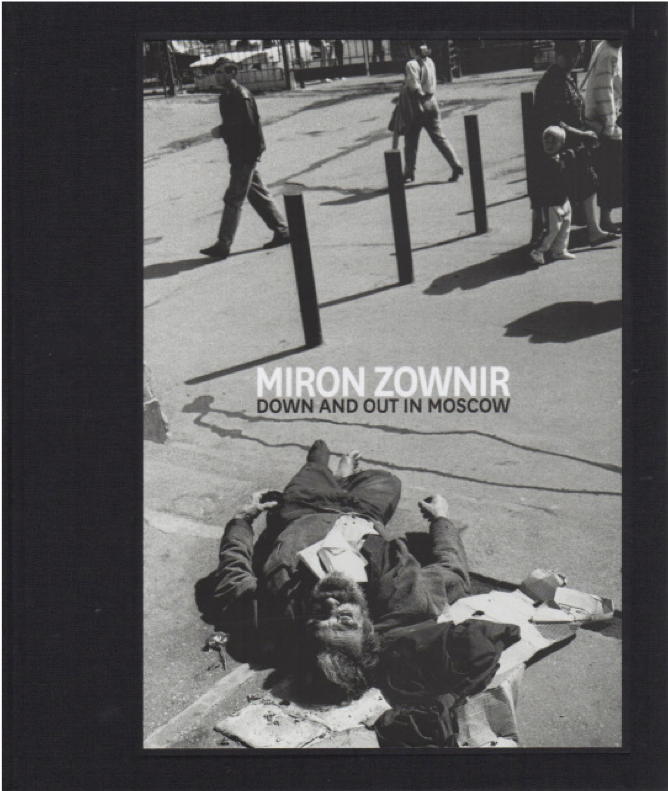


Night terrors: Counting loss in a global pandemic
Posted on by smisu13p
A post written by Ellan Baker and Susan Wardell, based on an ANTH424 assignment on ‘visual images and the communication of suffering and evil’.
On March 19th 2020, social media and news sites were flooded with images of military trucks, moving the dead out of the overwhelmed small Italian city of Bergamo, for cremation elsewhere [i]. Europe had replaced China as a new epicentre of the COVID-19 pandemic.
The city of Bergamo. Source: pixabay.com
Northern Italy is known for having small towns and tightly-knit communities, as well as for the beautiful scenery, cuisine and fashion which attract both domestic and international tourists iv. It was largely through travel and social interaction, that the new strain of coronavirus (named SARS-CoV-2) was spreading. Places like Bergamo, a city of just over 100,000 residents, had little time to prepare iii ii.
Picturing the scale of loss
One of the images from mainstream television (Sky News) showing Italian army trucks transporting the dead. Source: https://news.sky.com/story/coronavirus-italian-army-called-in-to-carry-away-corpses-as-citys-crematorium-is-overwhelmed-11959994
At the time that images of the crematory trucks were released, Italy was in an exponential climb in the number of cases. The number of deaths had now become a few hundred a day, despite best efforts of intervention and prevention. On March 19th, total fatalities had reached 3,405 and were still increasing vi.
As the pandemic spread, people all over the world took in this type of numerical information, to make sense of what was happening v . Rates of spread, death tolls, graphs and spreadsheets… these were forms of knowledge about the reality of Covid-19, which were also somewhat removed from acknowledgements of the level of human suffering it was creating, with every new case, and with every death of a unique human person that those numbers represented.
In this blog we discuss the ideas that images, as a different way of communicating suffering and loss, can help to rehumanise topics such as this. We argue they provide understanding of the scale of devastation in a different way than numbers do, and can be part of catalysing social change because of this.
Echoes of (an invisible) war
Tightly packed, the military-style trucks are moving in single file down the street. The arrangement of the trucks on the empty street has a ceremonial feel; dark colours, and a string of lights. The road is clearly in an everyday residential area, with a shop, carpark and green field visible alongside. But here it becomes a platform for procession vii.
The escort occurred at night – the image taken at 9:28pm – almost as if they needed to hide the moving of the dead, and shelter the living population vii. Was the suffering so great, that it could not be experienced during the day? Like the living, the day is sheltered from agony; maintaining its symbolic goodness, while night is reserved for pain.
In the photo there are many trucks, and within each truck, there are many bodies vii. The photo both is and isn’t about numbers. The impact of this photo is largely because the trucks are in fact innumerable, their line extends out both sides of the frame of the photograph. It asks us to recognise the scale of loss without making us, or letting us, count and quantify. It evokes the horror of scale, without relying on numbers. It makes an affective connection to the topic, without being explicit.
The image of a fleet of military trucks can’t help but raise the ghosts of war; historical echoes that will have different levels of feeling attached for different viewers, in different places. At very least, the string of large trucks connotes a high number of casualties, and yet there is a disjunct for the viewer, since absent from the still and tidy environment they move through is any evidence of danger or threat. The toll is being counted, truck by truck, but the enemy itself is a ghostly absence; an invisible virus, impossible to see or to conceptualise, except through its effects.
Watching from afar
At this time this photo was taken and posted, New Zealand and many other countries felt far from the ‘front line’. The need to take action here was not yet evident. So we watched the situation unfold through images like this, but even as we did, the virus exponentially spread once again, leaving tremendous amounts of uncertainty in its wake iii
The now-famous images of these trucks did not come, in the first instance, from scientists, journalists, or other authoritative communicators. Rather they appeared in the often informal domain of social media. The context of apartments opposite implies that this photo too is taken from an apartment window, looking down. The photographer is distant from the street, giving an even more heightened sense of risk or taboo in the scene below.
The juxtaposition of the sombre with the everyday (both in terms of the setting, the intimate framing of the photo, and its context on social media) makes looking at it all the more difficult.
Images of tragedy and horror often circulate well on the media – like this one, going viral, reaching around the world. Anthropologists Arthur and Joan Kleinman wrote about the circulation of images in the media in 1996, before the advent of social media, and yet they discussed many trends we could see continuing, and even increasing, today. They note, for example “viewers become overwhelmed” from a distance and come to have “moral fatigue, exhaustion of empathy, and political despair.” ix
Given the continuous flow of numbers and statistics, of images and video, through the news, this could well have been the case. Yet people seemed to want to look. Kleinman & Kleinman also discuss that despite their potential to overwhelm, images of suffering are often appealing because they leave the viewer asking questions ix.
The unending line of crematory trucks going beyond the photo’s borders shows the impact of the viruses devastation. But what questions does it ask? Are they questions that are answerable? Either way, they were questions that New Zealand did have to approach, as citizens, and as a nation, not long after Italy.
The human struggle
“Struggling to cope” vii the photo caption says. This is, on one level, a comment about institutional and systemic capacity to practically process so many dead – since these trucks were deployed for the purpose of relieving an already overloaded crematory system vii. But the phrase can also read as a marker of psychological overwhelm for those living through the experience.
The pain that the virus has caused is immense. Images of the COVID 19 pandemic re-humanise numerical information, by bringing Twitter users closer to the suffering of those who are grieving losses of loved ones. This can be contrasted to the insistent numerical broadcasting, which removes the emotional quality and the human context of information, and by itself, refuses to acknowledge the human lives behind them. As the quote often attributed to Stalin goes: “if only one man dies … that is a tragedy. If millions die, that’s only statistics.” x
Meanwhile, images have a variety of different ways of highlighting the specific, situated, and human meanings of these numbers. For example, the image below is of a blessing taking place by the service providers, to finalise the deceased person’s life, with dignity.
Photo of two men giving dignity to the dead, despite the large number of dead and the lack of family or friends of the loved one present. Source: Financial Times, https://www.ft.com/content/5e30a130-d62a-4c4c-a81f-b89f2448d9c8
This image, taken by Italian news photographer Piero Cruciatti, offers something different to the sense of scale of death and loss in Salvanechi’s image, in terms of communicating the impact of COVID-19. It reveals one part of the story behind each number, behind each body that the viewer understands to be concealed in those many military trucks. It shows the layers of human care and meaning invested into each of them; how the people closest to the suffering still muster the strength and urgency to undertake the enormous amount of cultural and physical work required to bring each person’s precious life to a close.
It shows, perhaps, the tragedy of the ‘one man’ rather than the thousands, and in doing so, it arguably brings a different kind of understanding of this event, than it does to contemplate the thousands.
Image and response
Paul Frosh, an academic writing about digital media, and specifically how people view and respond to the suffering of distant othersxi. One’s moral “response-ability”, he argues, is linked to the sensory mediums through which one is viewing and responding. People who viewing Salvanechi’s photo on Twitter, for example, had to choose how to respond, with their eyes, hands, and attention. Practically this could mean many things; clicking, commenting, sharing. More broadly, categories such as ‘witnessing’ explain what type of moral response these micro-actions may represent.
Images can broach both a geographical and emotional distance, and act as a testimony and a memorial in and of themselves, to human experience, and human suffering. In Salvanechi’s photo, and the photo by Piero Cruciatti, we are forced to consider the suffering that quickly can become incomprehensible and overwhelming vii– given a chance to hold our gaze, and to be witnesses to this horrible reality. And in doing so, to form a kind of momentary connection with other people’s life world’s that is void in the production of infographics and statistical data in journalism.
In addition, there are practical responses that can flow on from this deeper kind of acknowledgement. Read in full, the caption on Salvanechi’s candid night-time photograph has a clear intended purpose; asking for more serious adherence to policies of social isolation, as a tactic to slow the spread of COVID-19. Kleinman and Kleinman’s article acknowledges that images can become a social and symbolic commodity for igniting action and change ix.
When New Zealand’s time came, we also had to make choices about setting policy, and also following policy. About lockdowns and closures and social distancing, and other dramatic social changes. Who can say whether the things we had already witnessed overseas, through the lens and eyes of journalists and everyday citizens on social media, was part of shaping our response?
To conclude…
Whether directly affected or not, in this strange period of human history we have all become ‘online witnesses’ the the COVID19 pandemic. Many of us have absorbed large amounts of numerical and statistical information every day iii, vi. While this information provides easily absorbable overviews of the virus’ impact, it cannot contain or express the more human aspects of this moment in time. However, sprinkled throughout the media coverage, have been images that have also mapped the scope and scale of the pandemic, but in an entirely different way.
Images can hurt us, can wound us. They can also, at the same time, offer an embodied empathetic experience of the suffering of others.. Sometimes they can contribute to changes not only in how we understand the world, but the choices we make in response to it. The images of crematory trucks in Northern Italy expressed the large scale devastation of the virus, at a moment in which the whole world was watching, and deciding how to react. What we owe to these cannot be measured.
References
i National Post, 2020. COVID-19 Italy: Military fleet carries coffins of coronavirus victims out of overwhelmed town. [Online]
Available at: https://nationalpost.com/news/world/covid-19-italy-videos-show-military-fleet-transporting-coffins-of-coronavirus-victims-out-of-overwhelmed-town
[Accessed 09 April 2020].
ii Worldometer, 2020. Italy Population (LIVE). [Online]
Available at: https://www.worldometers.info/world-population/italy-population/
[Accessed 20 April 2020].
iii NZHerald, 2020. Covid 19 coronavirus: How virus overwhelmed Italy with almost 5000 deaths in a month. [Online]
Available at: https://www.nzherald.co.nz/world/news/article.cfm?c_id=2&objectid=12318768
[Accessed 20 April 2020].
iv Turismo Bergamo, 2020. Visit Bergamo: An Italian masterpiece. [Online]
Available at: https://www.visitbergamo.net/en/news/item/278/
[Accessed 21 April 2020].
v Knox, C., 2020. NZHerald. [Online]
Available at: https://www.nzherald.co.nz/nz/news/article.cfm?c_id=1&objectid=12322890
[Accessed 04 May 2020].
vi Worldometers.info, 2020. WORLD / COUNTRIES / ITALY. [Online]
Available at: https://www.worldometers.info/coronavirus/country/italy/
[Accessed 20 April 2020].
vii Salvaneschi, G., 2020. Twitter.com. [Online]
Available at: https://twitter.com/guidosalva/status/1240555847849312256
[Accessed 09 April 2020].
viii Clark, H., 2020. Missing In Action: the lack of a globally co-ordinated response to Covid-19. [Online]
Available at: https://www.stuff.co.nz/national/health/coronavirus/120969978/missing-in-action-the-lack-of-a-globally-coordinated-response-to-covid19
[Accessed 04 May 2020].
ix Kleinman, A. a. K. J., 1996. The Appeal of experience; the dismay of images: cultural appropriations of suffering in our times. Daedalus, 125(1), pp. 1-23.
x Stalin, J., 1947. A Single Death is a Tragedy; a Million Deaths is a Statistic. [Online]
Available at: https://quoteinvestigator.com/2010/05/21/death-statistic/
[Accessed 21 April 2020].
xi Frosh, P., 2016. The mouse,the screen and the Holocaust witness: Interface aesthetics and moral response. New Media and Society, 20(1), pp. 351-368.
Posted in ANTH424 (Anthropology of Evil), Case study, Media/political commentary | Tagged anthropology, Corona virus, Covid-19, Covid19, death, Digital, grief, images, Italy, lockdown, morality, pandemic, photography, Ritual, statistics | Leave a reply